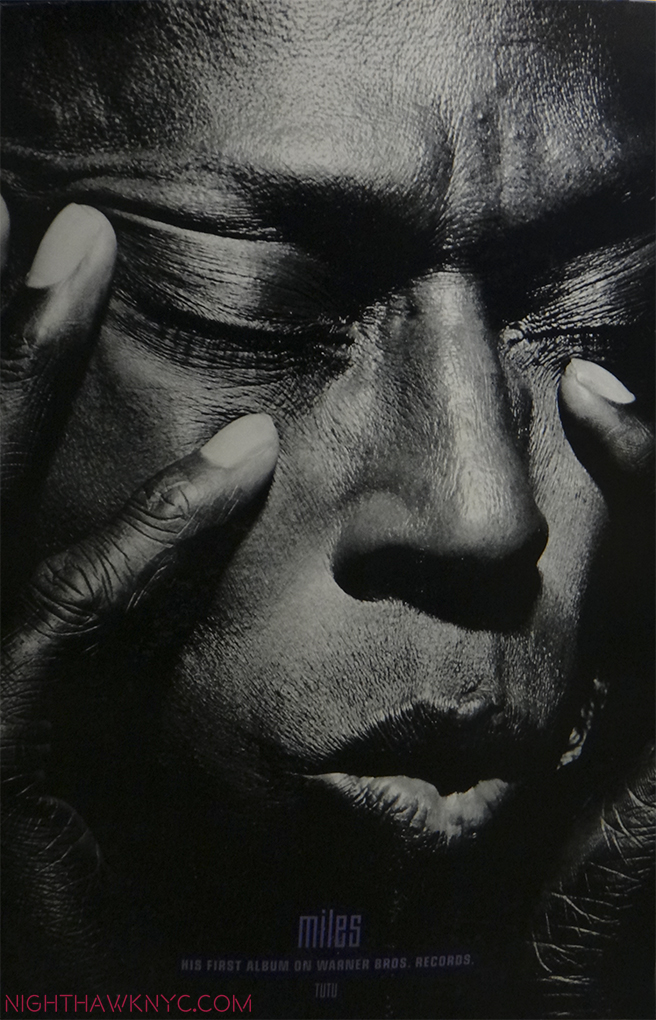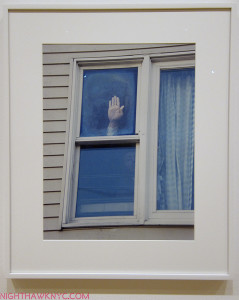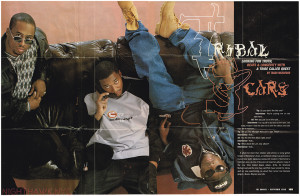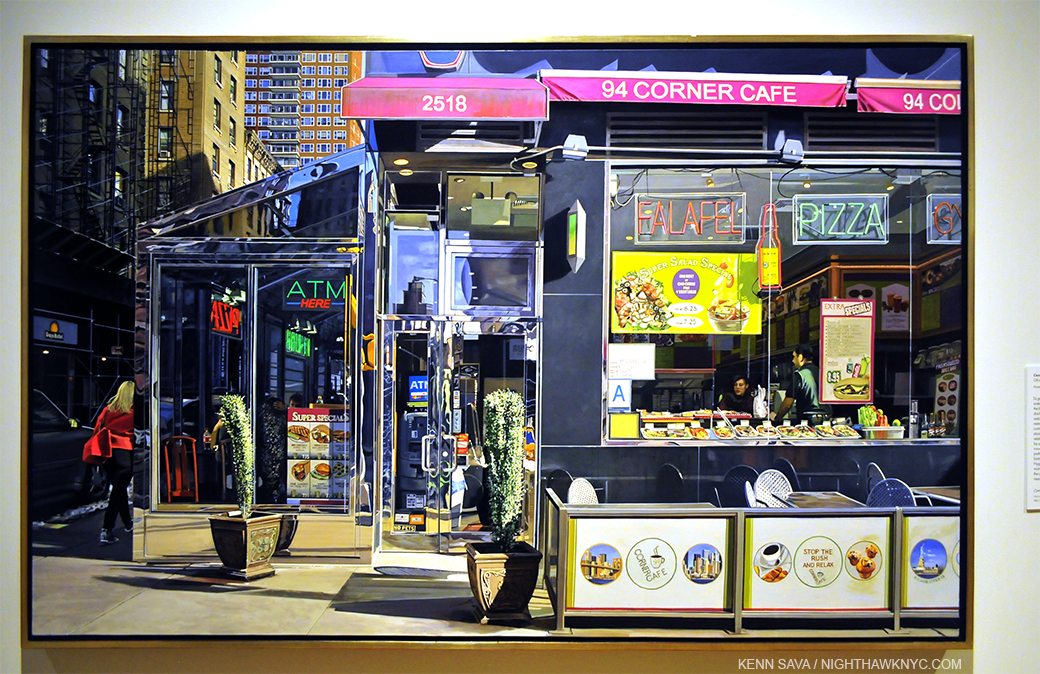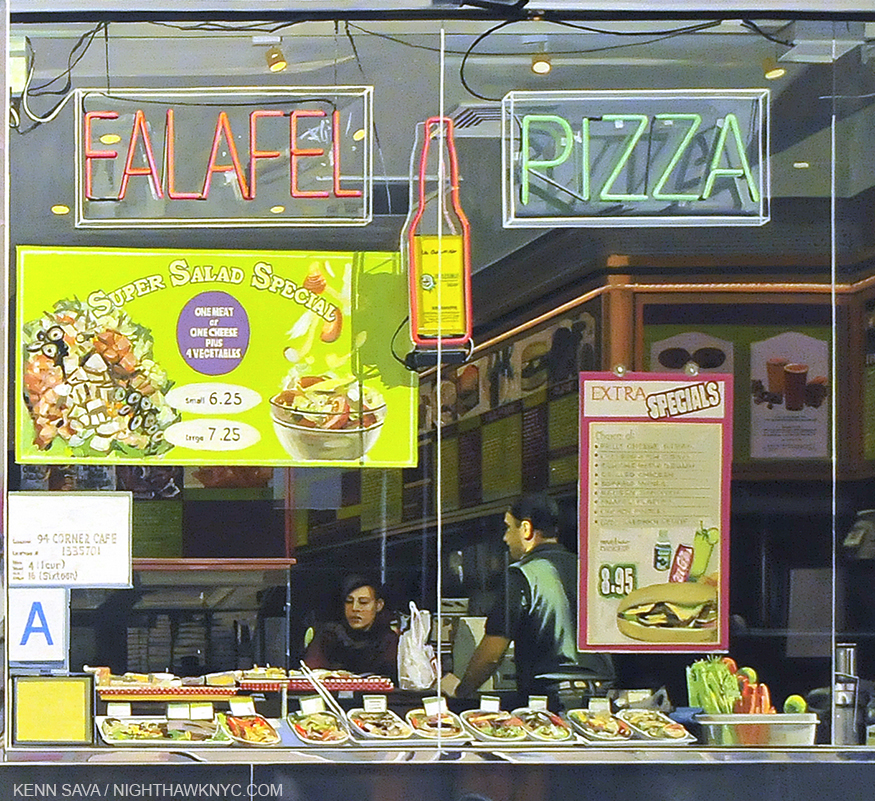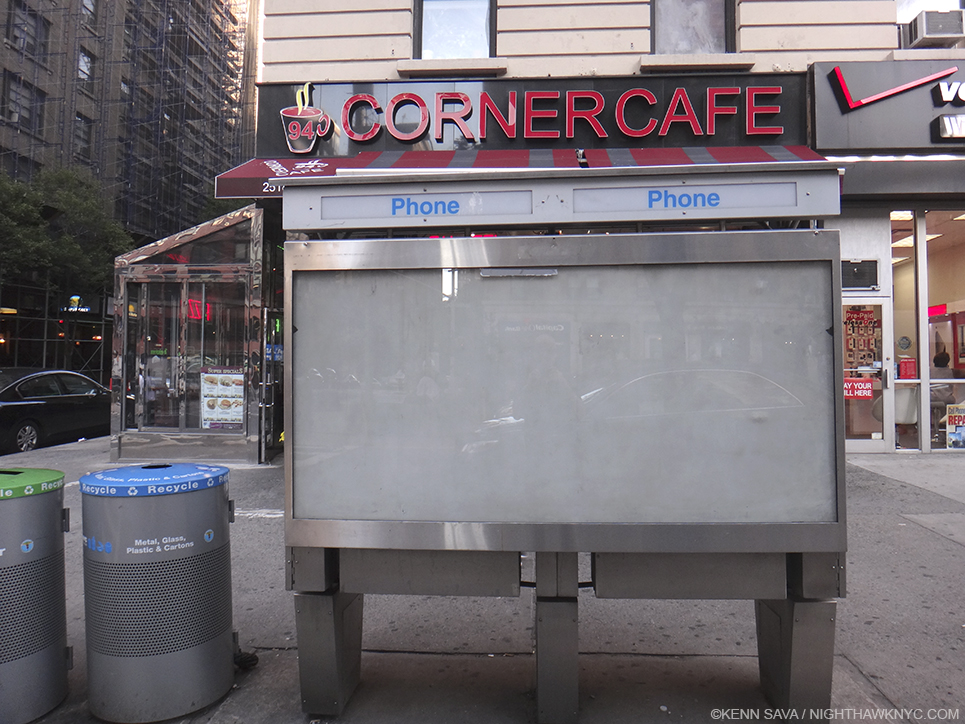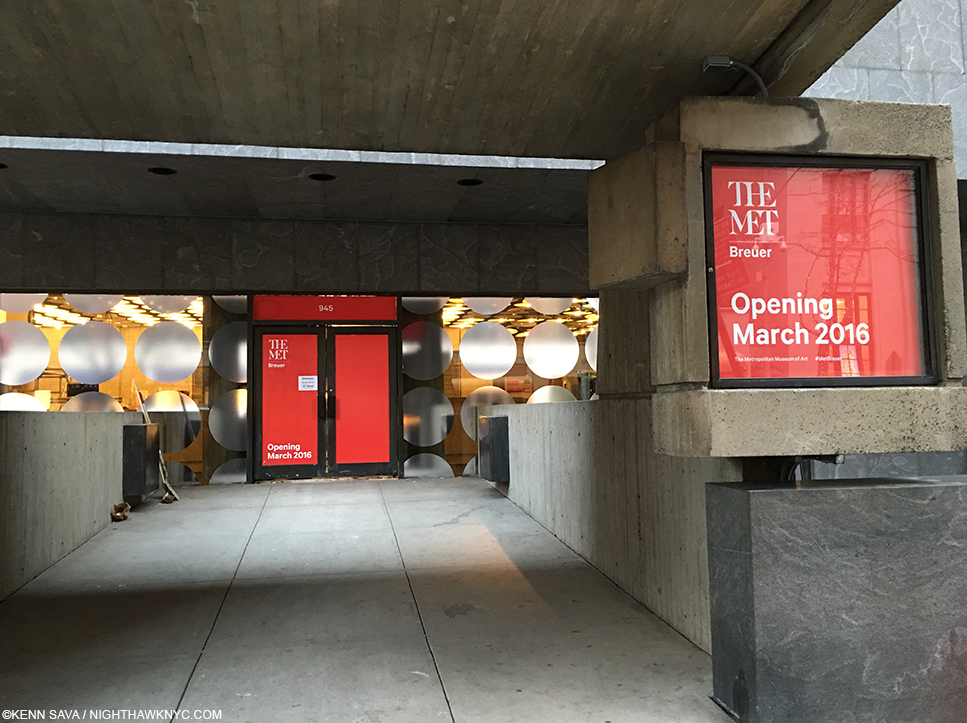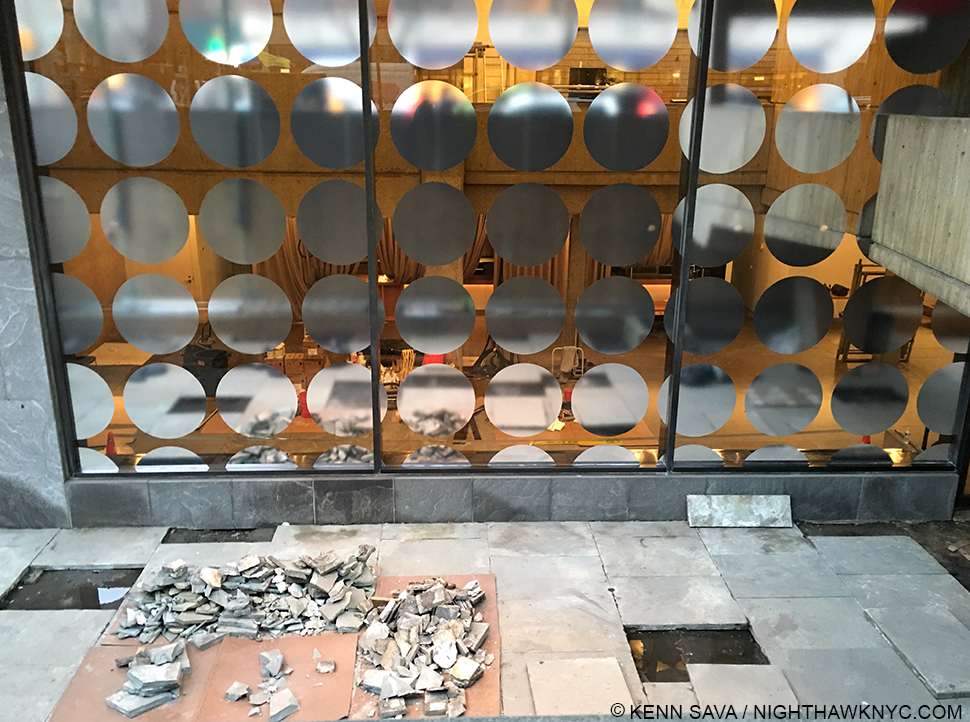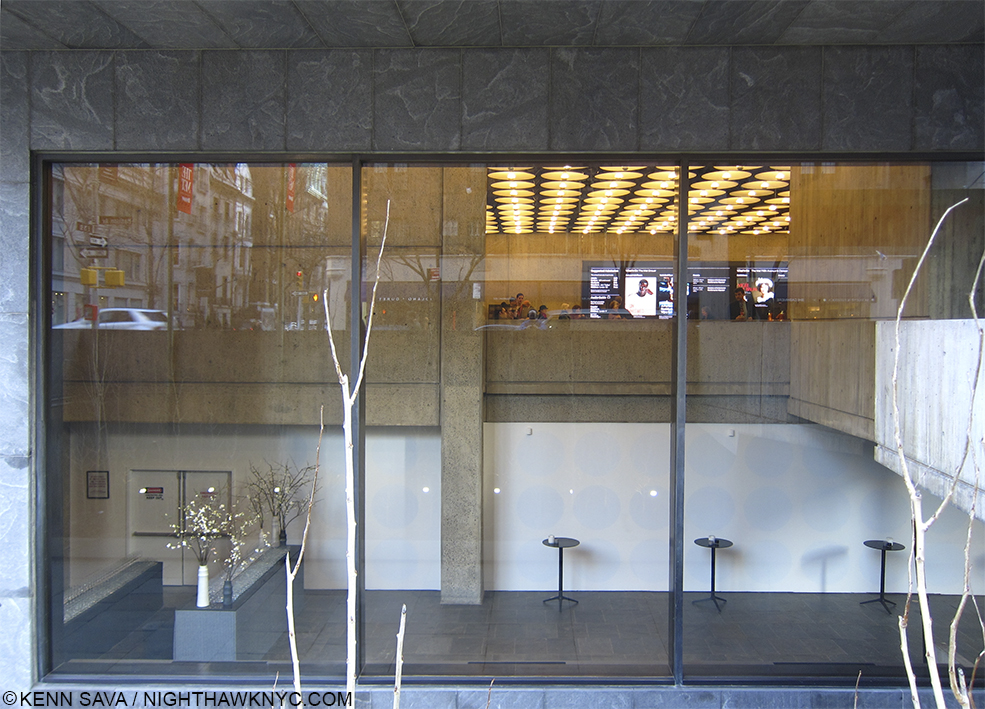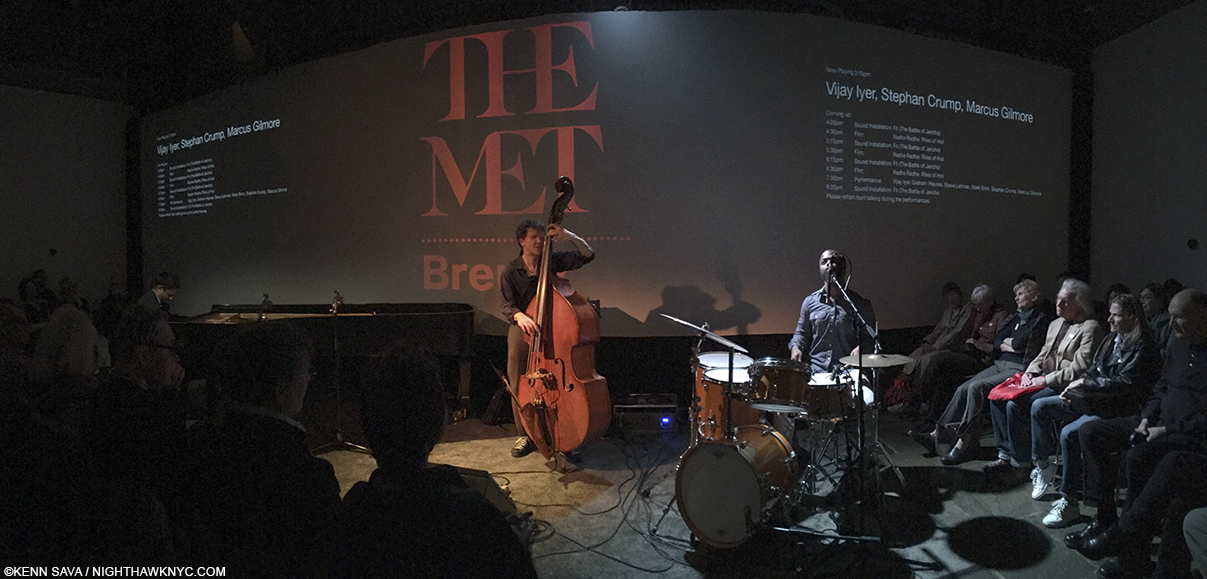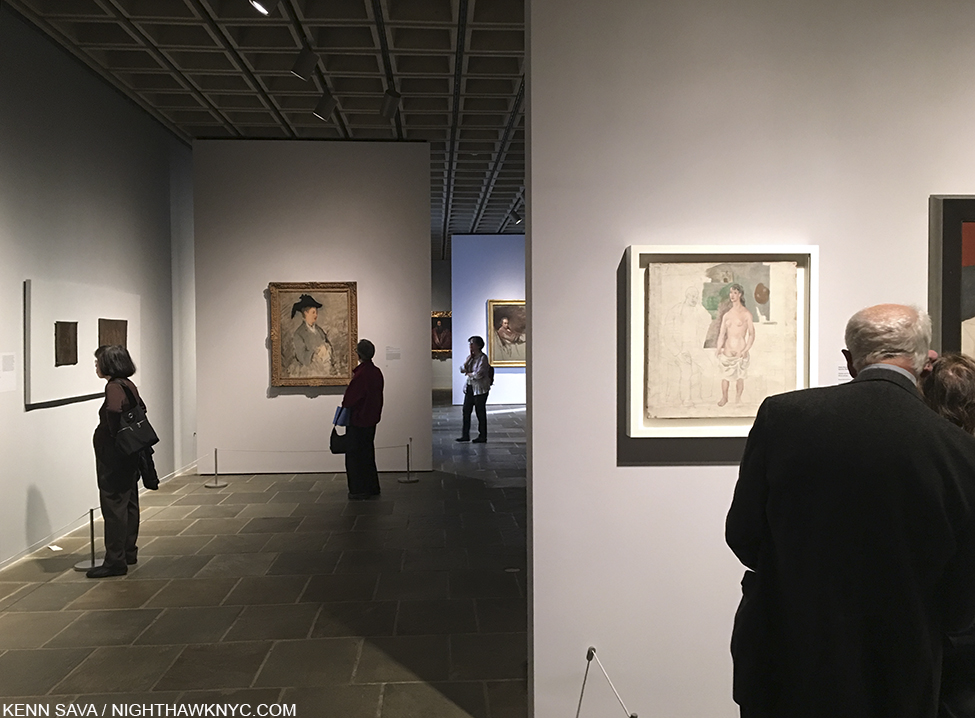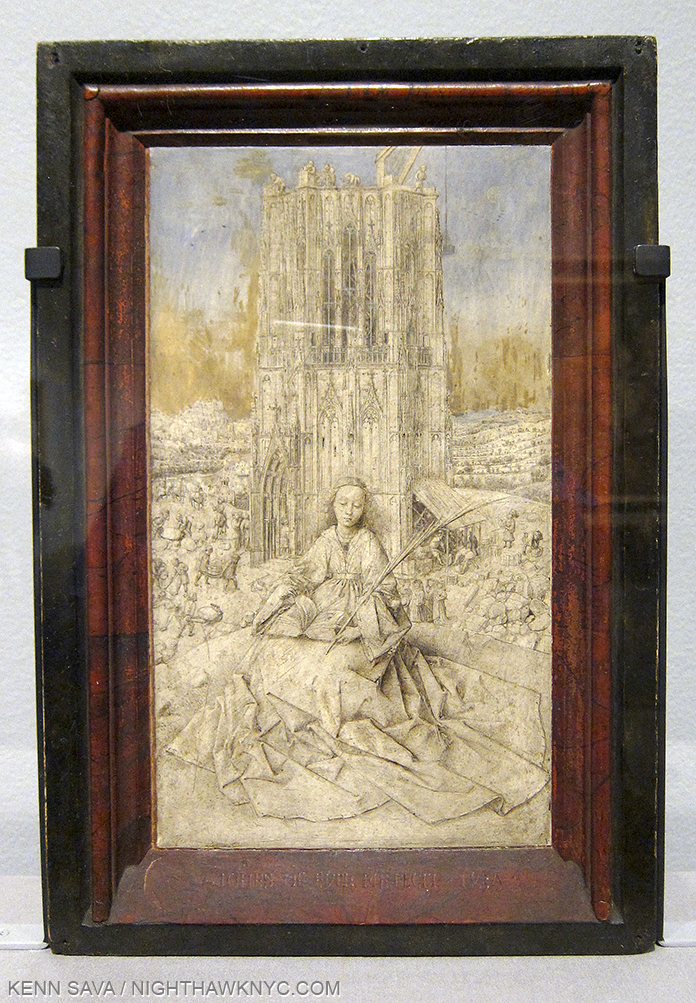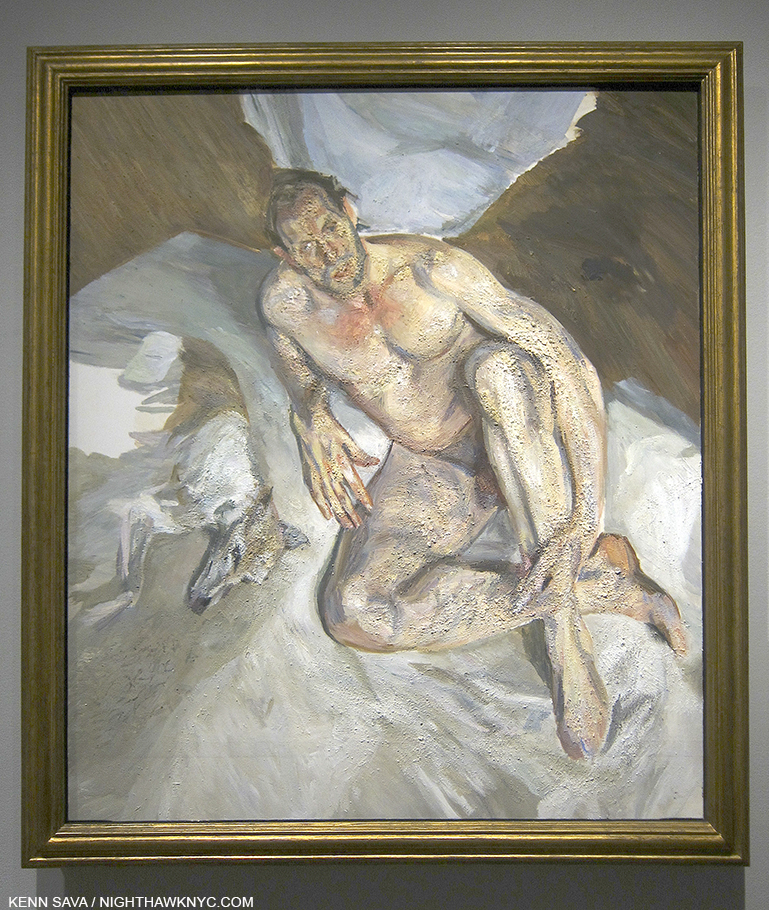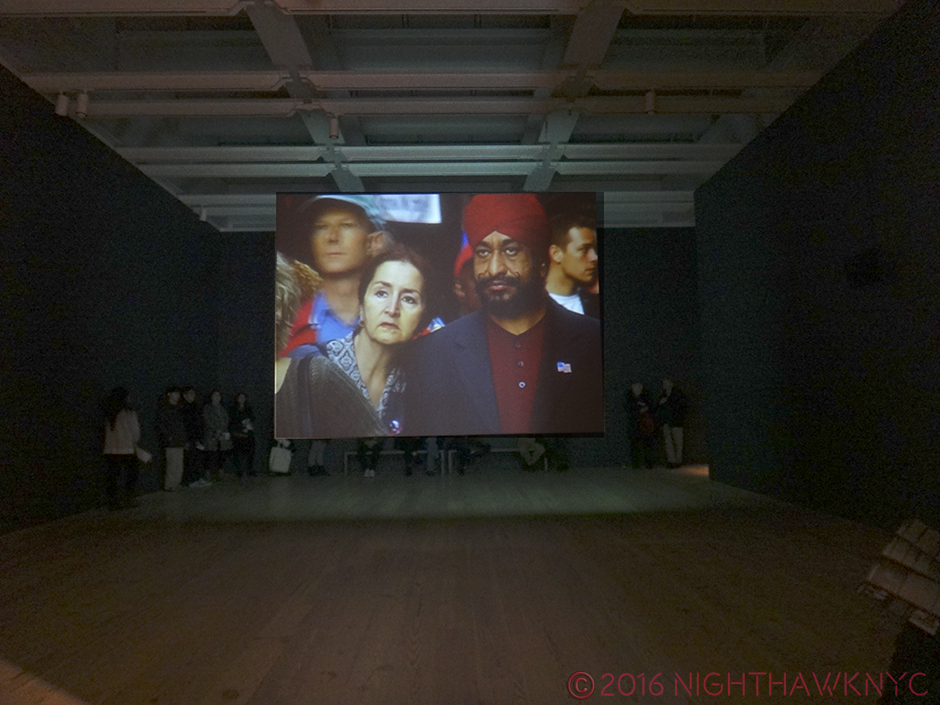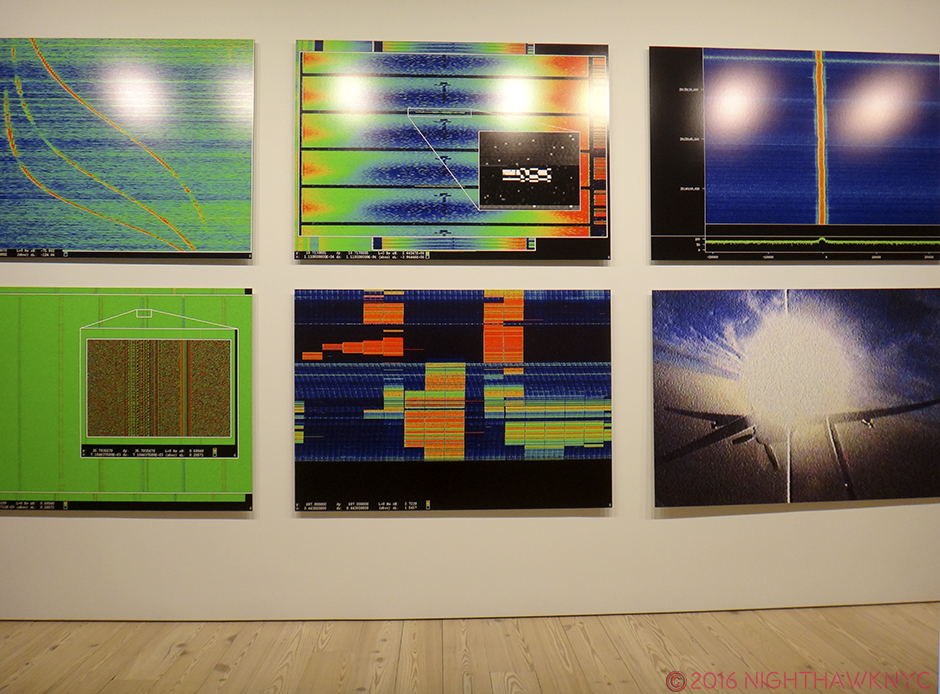This site is Free & Ad-Free! If you find this piece worthwhile, please donate via PayPal to support it & independent Art writing. You can also support it by buying Art & books! Details at the end. Thank you.
Written & Photographed by Kenn Sava (*- unless otherwise credited)
Here we go, again. Or, to quote the late, great Eddie Jefferson in “Moody’s Mood for Love”- “Here I Go, Here I Go, Here I Go, Again…”
The film, Miles Ahead, gives me cause for concern. No, I haven’t seen it yet. I’m not sure I’m going to see it. Why? Probably for the same reasons I didn’t go to see the Steve Jobs movie. While I’m all for artistic freedom and creative license, as time goes on it seems that “docudramas” that purport to be “about” someone real tend to paint incomplete pictures of their subject. They “riff” on them. Whether they are “good” movies, or not, whether they do any justice to the truth of their subject, or not, the public comes to base their opinions of their subjects on these films. Sometimes, (like Lady Sings The Blues “about” Billie Holiday, which “incongruously transforms Holiday’s messy, bisexual, masochistic romantic history into a glossy romance about a troubled, needy woman-child and the endlessly patient dreamboat who could slow but never entirely halt her march toward self-destruction,” according to Nathan Rabin of The Onion AV Club), even worse, they may leave them feeling there’s no need for them to look past the film for themselves. (Both Billie Holiday and Miles Davis wrote Autobiographies.)
This is very sad.
I’m hoping the film, whatever it’s “about,” will inspire viewers to want to hear more of Miles’ music, ideally, all of it, and that will be the primary result of it.
Last time I checked, very few Artists or Musicians had been canonized as saints, though in my personal Church of Art, they’re revered to me. They’re human. They had flaws. Some did very bad things. Allegedly committed crimes, even murder. Some did drugs, and weren’t exactly nice or easy people to know. Miles Davis has been accused of doing some bad things. Does creating great timeless Art or Music that effects millions of people make that Ok? That’s not for me to say.
I do know this-
Miles Davis was probably the most influential Artist in my life. While I never met him, his signature and mine actually did wind up on the same piece of paper once, a few inches apart, and I was fortunate enough to see him perform about 40 times. That’s as close as I got to him. But, his music, especially his albums? They’ve been closer- they’ve been a part of me since I learned how to work a record player.
When his album Bitches Brew came out, only the latest in a string of game changing albums he released every few years, it was so controversial, it led to the break up of the band I was in at the time. At that point I was playing electric bass in a friend’s blues band, and listening to jazz. After Bitches Brew, an unprecedented mix of jazz, rock, funk, avant garde, and what came to be called “world music,” and the first-shot-over-the-bow that something very new and different was going to be happening hence forth, a lot of us realized it was possible to play electric instruments and play jazz. So, I started looking around for a band to do that with, eventually found one, and went on the road with them for five years. They were all far more accomplished musicians than I was. Miles was a legend, even back then, to all of them, too. He has been as long as I can remember.
It’s hard to think about the impact that every single one of Miles’ albums had at the time it came out, going back to the Birth of the Cool, which is exactly what it was, in the late 1940’s . It must’ve been like Picasso creating a new work to the artists of his time. Miles had the ability to move mountains with every new album. Musicians would listen to them and think about them vis a vis what they were doing. Miles was always Miles beyond. In fact, all of his albums from the late 60’s bore the moniker “Directions in Music by Miles Davis.” That said it all. With Bitches Brew, people began to argue that it “wasn’t jazz.” If you had followed the thread of his music through the 1960’s, you could hear where he was going and you could also hear the same thing that always defined Miles, more than anything else- His sound.
No one could play a melody like Miles. And then, no one else had his sound.
He started the 1960’s fresh off what is widely considered the greatest jazz record ever made- Kind of Blue in 1959. His 1960 group, now referred to as his “First Great Quintet” included that other great master of post war jazz improvisation- the tenor saxophonist, John Coltrane. The two couldn’t be more different, and made perfect foils for each other. Miles was the inventor of space- what Artists call “negative shapes,” that is, what isn’t there- in music’s case, silence. Miles could say more with less than any Artist in Jazz history- even with one note. (Even when I heard him in a concert late in his career, racked will illness and apparently having trouble moving on stage, there would be that one moment, that one note that would sear the night and make your jaw drop. The silence that inevitably followed making it infinitely more poignant.) John Coltrane was on his way to developing what became his signature “sheets of sound” style, would solo after Miles and his voluminous brilliance would serve to frame Miles the way black velvet sets off a diamond. Of him, Miles famously once said, “I had 7 Tenor players once.” Coltrane left to form his own group, but somehow Miles managed to put together another great group- his, so-called “Second Great Quintet” with Wayne Shorter on Tenor, Herbie Hancock on Piano, Ron Carter on Bass and Drummer Tony Williams. As the sum of its parts, this band of Masters, was, for me, the pinnacle. To this day, I revere every note I have heard them play in the slightly over 2 years they were together as I do no other group I have heard. No group has taken the art form of the acoustic jazz quintet further.
Then, it changed, again. He went from the Second Great Quintet to an increasingly more electric sound. This was the mid-1960’s and rock and funk were influencing him. Herbie and Wayne remained for the first few albums, and then they, too, left and were replaced by people like Keyboardists Joe Zawinul, Keith Jarrett & Chick Corea, Guitarist John McLaughlin, Bassist Dave Holland, Drummer Jack DeJohnette, and many others, quite a number of whom went on to have had long and important careers.
Today, Miles’ influence is everywhere. His legacy lives on. While many of his side men, like Hancock, Shorter, Corea, Jarrett, Holland, Marcus Miller, Mike Stern, et al, are still among the biggest names in jazz, his legacy is being handed down to their side men, and on it goes. For me, a day doesn’t go by that I don’t hear a piece of his.
So? Why do I dread this movie?
Because unless you grew up with this, it’s really hard to capture on film. Jazz was (and still is) a very hard way to make a living- mostly in small clubs in an environment filled with drugs, alcohol, crime, trouble and little to no money for most. Yes, there was scandal and a lot of controversy in Miles’s life. It’s very easy to make a drama out of it. I hope that’s not all it does. To do so, would be to miss the point.
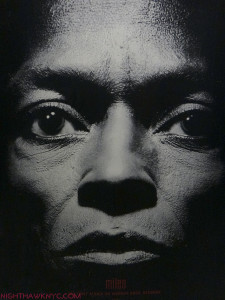
From here, to eternity. My other 4 foot Tutu Poster by Irving Penn. This one, the classic cover shot of “The Prince of Darkness.”
It would be to miss why Miles is an Artist for the ages.
While I don’t believe in comparing Artists qualitatively, I do think it can be illuminating to see similarities and differences between them. Miles is often called “the Picasso of Jazz,” and I can understand why- Their lives largely overlapped (Picasso- 1881-1973, Miles 1926-1991. Miles also painted.) They both refused to be pigeonholed, and changed styles as frequently as it suited them. They both continued to grow and evolve as Artists literally right up to the very end. When I think about Picasso and Miles Davis, I wonder if the total number of pieces Picasso created may be very similar to the total number of performances that Miles Davis gave, when you consider live and studio performances. Though Miles was infrequently in the studio during large portions of his career, he was active as a live performer. Whatever the total numbers might be, the two are similar in that they were both extraordinarily prolific.
Picasso was very aware of the history of art and what was going on in and around him, witness his long relationships with Matisse, Braque, among others, Miles immediately sought out, then played with Charlie “Bird” Parker, the greatest musician of his time, soon after arriving in NYC to study at Julliard, and, startling to many, the young unknown, barely out of his teens, was asked by Bird to join his group. Interestingly, as time went on, Miles, in turn, nurtured the careers (to varying degrees) of the likes of John Coltrane, Wayne Shorter, Joe Zawinul and Herbie Hancock among many others. He was also very aware of what people like Jimi Hendrix and later, Prince, were doing, and played with both.
Along with Frank Sinatra, Ella Fitzgerald, Louis Armstrong and a few others, his performances of standards define them.
Along with this, the kid from East St Louis, Illinois wound up sonically defining New York City. It’s impossible for me to listen to Kind of Blue, which may be the greatest improvisation in music history, without seeing a tone poem of New York City in my mind each time. (A live performance shortly after its recording, with John Coltrane-)
No one else I have ever heard, in any kind of music, has come closer to it. A couple of years ago the Village Voice ran a list of the greatest New York City songs. Nothing from Kind of Blue, which was recorded on 30th Street in Manhattan, made the list. Someone is out of their mind. Kind of Blue celebrated its 50th anniversary in 2009. Get back to me on how some of the songs the Voice picked are doing in 50 years. The “cool” sound, style and attitude he created, and embodied, in the 1950’s became en vogue everywhere, nowhere more than right here.
Maybe one day I’ll see the film and feel my fears were for naught. Miles Davis made a unique and extremely valuable contribution to music, to American and World culture. Even though he didn’t die that long ago, this contribution is already in danger of beginning to be forgotten. This is not something to be taken lightly. His legacy is important- to me and countless others. I’m writing this to express how I feel about Miles (and “riff” about him the way the film may), and to say that I hope anyone interested in him hear as much of his music as you can1
You can also support it by buying Art, Art & Photography books, and Music from my collection! Art & Books may be found here. Music here and here.
Written & photographed by Kenn Sava for nighthawknyc.com unless otherwise credited. To send comments, thoughts, feedback or propositions click here. Click the white box on the upper right for the archives or to search them. Subscribe to be notified of new Posts below. Your information will be used for no other purpose.
- Miles created a long legacy of recorded music, and changes styles of music more often than almost anyone else has. Kind of Blue, seems to be where most people start. After that, I’ve written an entire piece called “Directions In Listening By Miles Davis”Directions In Listening By Miles Davis” with some thoughts on what to check out next. He also wrote an Autobiography. So, get to know him through those and make your own mind up about him. If you want to know what’s really important about Miles, do yourself a favor- Go to the source- start with his music. It’s a font that will be inspiring millions for as long as music is played.
Yes, Miles Davis was a complex man by all accounts. Like Steve Jobs, people will be trying to understand him and tell stories, even make films about him for many years to come. Both were, by all accounts, incredibly complex men. That alone makes it very hard to do them justice in a 2 hour film. Some love Miles, some loathe him, many found him scary, difficult or impossible to deal with. All I know is that Miles, the Artist, is one of the greatest Artists in music- that’s what’s important, and the rest is, now, details. If you go and see the film, keep this in mind and try and imagine the effect his music had at the time and how often it changed the musical world. That doesn’t happen often. How many Artists take those kinds of risks anymore? How many risk losing their audience? And how many do it over, and over, and over, and over, again? That’s a big part of his legacy that shouldn’t be forgotten, and one I hope will be emulated by those still being influenced by him, those who want to get to the heart of what’s really important, like this-
Next time you listen to Miles, listen for that one note that says more than words ever can- it’s there in every one of his performances, and then listen for the silence.
*Soundtrack for this post is “It Never Entered My Mind” as performed by Miles on “Cookin’ & Steamin’ with the Miles Davis Quintet” (there are other versions), a long time personal favorite. It was written by Richard Rogers & Lorenz Hart and published by Warner Chappell Music, Inc.
POSTSCRIPT- June 20, 2020- I finally did see Miles Ahead. I found Don Cheadle’s performance to be amazing. It’s obvious to me how much care and passion he put into this film. Herbie Hancock and Wayne Shorter appear onstage during the final credits, which makes me believe they had some level of awareness of the film’s content, though I am not saying they gave their approval to it- I simply don’t know. Still, it strikes me as a dramatization, and as such, it’s fine as an ancillary source. I still say- go to the source (if you’re looking for a visual source, check out the new documentary film, Miles Davis: Birth of the Cool, which ran on PBS’ American Masters series in early 2020), get familiar with Miles’ accomplishment, and his own words, and then, if you’re looking to see his life interpreted dramatically, riffed on, by someone else, check out the film. If not, you are selling Miles, and yourself, short, if the film is all you know about him. It reminds me of the dramas being done on Picasso, that other endlessly creative 20th century Artist. That they keep Miles’ and Picasso’s name in front of the public is good, I guess, but if that’s as far as the public’s interest goes, and they don’t discover who these people REALLY were for themselves? They are left with distorted views, which is what I feared when I wrote the above in March of 2016, and this is not good, in my opinion.
NighthawkNYC.com has been entirely self-funded & ad-free for over 8 years, during which 300 full-length pieces have been published! If you’ve found it worthwhile, PLEASE donate to allow me to continue below. Thank you, Kenn. [paypal-donation ↩

